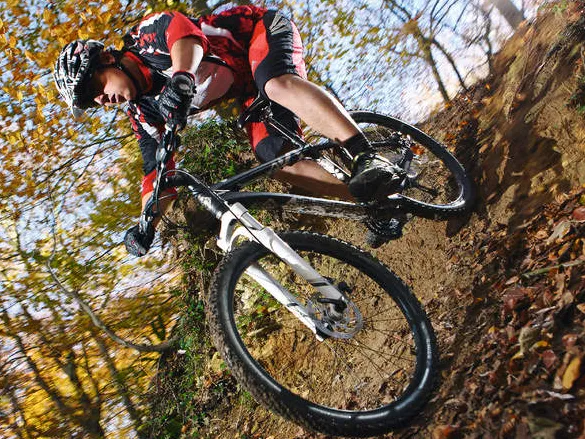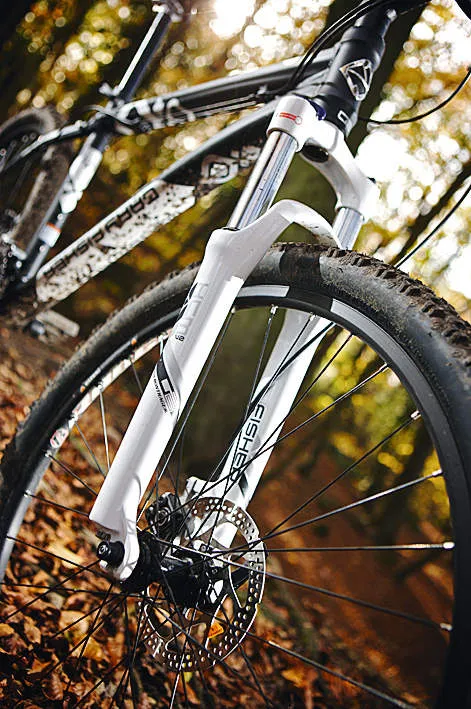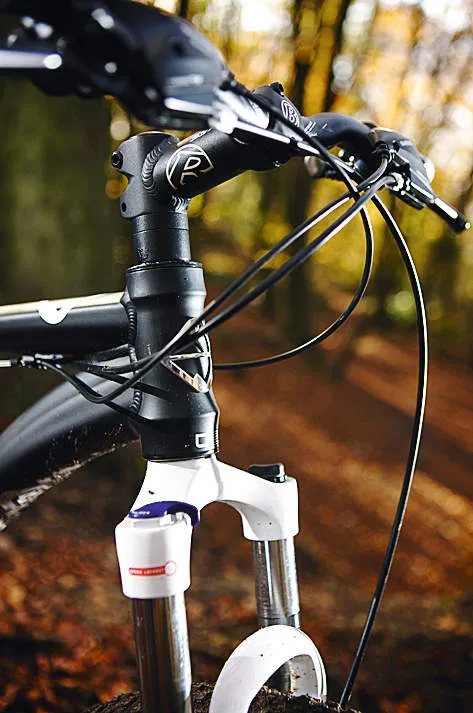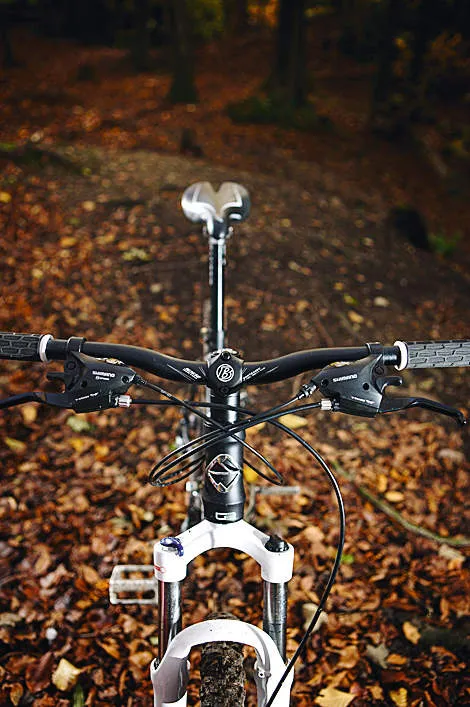The Wahoo is a little different to typical entry-level mountain bikes. The frame has been designed with a longer reach than average for each given size and the ‘Handling by Bontrager’ fork has been specially designed for Fisher.
The result promises great handling at slow speeds as well as the higher-speed stability that Gary Fisher’s original Genesis geometry was made for. Apart from the 13.6kg (30lb) weight that so often comes with sub-£500 bikes, there seem to be remarkably few performance compromises here.
Ride & handling: We like Fisher’s fast but stable G2 geometry, but it takes a while to get used to
Fisher’s Genesis G2 geometry (see Frame below) will certainly have a bearing on whether you end up liking the handling of the Wahoo. The steering feels quicker than on most other sub-£500 bikes at lower speeds, to a point of feeling nervous until you get used to it.
The combination of sitting forward on the bike, the long top tube and short stem all conspire to shift more body weight over the fork and front wheel. Again, you may initially feel slightly nervous about this but you’ll get used to it quickly, it’ll make you use the 100mm (3.9in) of fork travel more effectively and you’ll probably end up riding more aggressively.
The high-speed stability, notably on rough descents, is superb and the 13.6kg (30lb) weight won’t slow you down much on the climbs either, because the long top tube ride position is so efficient. The Wahoo is at its best on the sort of snaking rollercoaster singletrack that, to many riders, is the essence of mountain biking.
This is unusual for a bike at an entry-level pricepoint. Our expert riders initially liked the handling more than our relative beginners, but by the end of a couple of longer sessions, everyone had warmed to it.
It’s more costly than some of the other entry-level bikes we've tested recently, and the parts aren’t any better than those on some of the cheaper bikes, but its superior fork and competitive geometry made it a favourite.

Frame: Versatile chassis with plenty of manipulated tubing – but check sizing before you buy
It’s good to see Fisher using the characteristic Genesis G2 geometry on an entry-level bike. The long top tube, short stem and custom fork rake is aimed at improving handling prowess on technical terrain and improving stability at speed.
Riders buying a £450 bike might not have comparison experience but the obvious thing when you climb on the bike is the reach to the bars – a 17.5in Wahoo is 2cm longer (from seat to bar centre) than a 19in Specialized Hardrock. So think carefully about which size you need.
The frame construction offers a lot of talking points, most of which probably boost performance slightly too, although to be honest it’s hard to tell because the tyres and the fork characterise the ride feel far more than the big curvy hydroformed down tube, squat flare-butted head tube and shapely seat and chainstays.
All-rounder practicality shines through, with three sets of bottle cage bosses, rear rack mounts, masses of mud drop-though room around the tyres and cable guides that allow you to run full outer cable, or hydraulic hose if you upgrade, to the rear brake. There’s a 1.5in stack of washers for stem height adjustment too.
Equipment: Far better fork than average at this price, plus fast and grippy tyres
The SR Suntour fork has been designed to Bontrager specifications, with more offset than average to enable faster steering at low speeds. The 100mm (3.9in) travel is fairly well controlled, with a soft top-out when it rebounds. The leg-top lockout lever makes the fork very clunky when fully engaged but you can stiffen the fork enough for climbs and road work by flicking it halfway.
The Wahoo drivetrain is about average for a £450 bike, with a very basic steel-ringed Shimano crankset (with a square taper bottom bracket axle), a Deore rear mech, Altus front mech and eight-speed cassette with Easyfire shift levers. Its operation was faultless throughout the test.
Shimano’s cable discs took a couple of rides to reach their best but once bedded in were powerful, efficient and easy to fine tune. We’d change to full outer cable to the rear brake for extra weather-proofing.
The Bontrager-rimmed wheels have Shimano hubs and the front has a Clix sprung-loaded safety quick-release that keeps the wheel in the fork ends even if the lever loosens. The Bontrager Jones XR treads are fast rolling and grippy in most conditions, and all the Bontrager finishing kit is basic but good quality stuff that boosts comfort at all the contact points.



